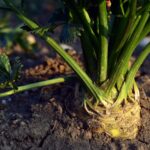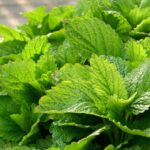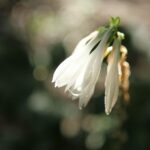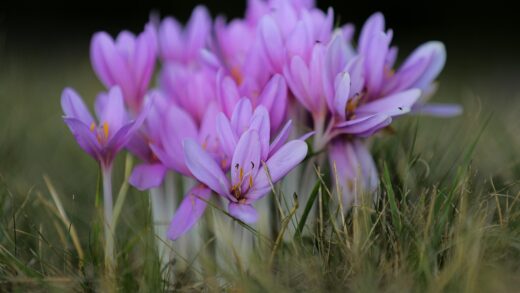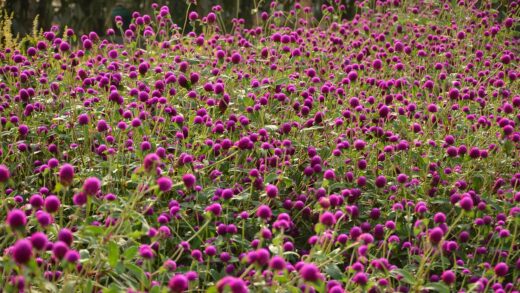The artichoke, this thistle-like vegetable specialty, is not only a delicious delicacy but can also be an ornament in our garden. However, for it to produce a bountiful harvest year after year and remain a healthy, vigorous plant, professional pruning and cutting back are essential. Many may shy away from this task, but with a little attention and the right knowledge, it can be easily mastered. Pruning is not rocket science, but a kind of dialogue with the plant, during which we help its development and renewal. This article helps to understand the life cycle of the artichoke and to master the techniques that will allow us to get the most out of this wonderful plant.
The primary purpose of pruning is to focus the plant’s energy on the most important processes, namely bud formation and vegetative growth. By removing old, diseased, or damaged leaves and stems, we not only improve the plant’s aesthetic appearance but also prevent the development of various fungal and bacterial infections. Proper pruning stimulates the growth of new shoots, which results in more and better quality yields in the following season. In addition, thinning pruning improves the ventilation and light supply to the inside of the plant, which also contributes to healthy development and reduces the chance of pests settling.
It is important to understand that the artichoke is a perennial plant, which means that it bears fruit for several years, provided it receives proper care. It requires different pruning interventions at different stages of its life cycle. In the first year, the emphasis is on strengthening the root system and foliage, while in later years, maintaining the yield balance and rejuvenating the plant come to the fore. The timing of pruning is crucial, as a poorly timed intervention can do more harm than good. Therefore, in addition to using the correct technique, the current condition of the plant and the local climatic conditions must always be taken into account.
Always use clean and sharp tools for pruning, such as pruning shears or a sharp knife, so that the cutting surfaces are smooth and undamaged. This will minimize the risk of infection and promote rapid healing of wounds. Larger cutting surfaces can even be sealed with a wound-sealing compound, especially in wet, humid weather. The cut plant parts should always be removed from the garden and, if possible, destroyed or properly composted to prevent the spread of pathogens. Careful preparation and precise work will be rewarded in the health of the plant and the abundance of the harvest.
The importance of spring pruning
Spring is a time of renewal, and the artichoke is no exception. After the frosts have passed, when the new shoots begin to grow, it is time for the first major intervention. This is when the leaves and stem parts that have frozen, dried out, or been damaged during the winter must be removed. This cleaning pruning not only tidies up the plant aesthetically, but also helps the plant to devote all its energy to growing new, healthy shoots. With spring pruning, we rid the plant of unnecessary ballast and make way for vigorous new growth.
More articles on this topic
During the spring work, it is worth taking a close look at the plant. The stronger, more viable shoots should be left, and the weaker, stunted ones should be removed from the base. Usually, leaving 3-5 strong shoots is enough for the plant to grow nice, large buds. This thinning is important because if too many shoots are left, they will compete for nutrients and light, resulting in smaller, lower-quality artichokes. The principle of less is more is particularly true here.
In addition to shoot selection, spring pruning also includes the removal of the lower leaves near the ground level. These leaves often come into contact with the moist soil, which creates an ideal environment for fungal diseases such as powdery mildew or downy mildew. Removing these leaves improves air circulation around the plant, which helps prevent the development of infections. This is a preventive plant protection measure that can significantly reduce the risk of future problems and keep the stock healthier.
Let’s not forget that after spring pruning, the plant needs an increased supply of nutrients for intensive growth. After pruning, it is worth loosening the soil around the plant and enriching it with mature compost or organic fertilizer. This provides the necessary energy for the plant to regenerate quickly and reward the care with a bountiful harvest. Spring pruning and nutrient replenishment go hand in hand, together they lay the foundation for a successful artichoke cultivation throughout the year.
Summer and post-harvest tasks
During the summer, the artichoke focuses on producing fruit. At this time, pruning is primarily related to harvesting. The artichoke bud should be cut when it has reached the right size, but its bracts are still tightly closed. The bud should be cut together with the stem, with a stem section of about 5-10 centimeters, as this part is also edible and tasty. The main bud, which develops on the central stem, is usually larger, and harvesting it stimulates the development of smaller secondary fruits growing on the side shoots.
More articles on this topic
Harvesting can also be considered a form of continuous pruning. As we remove the ripe buds, the plant releases energy to grow new ones. It is important not to let the buds flower on the plant, unless we are keeping it as an ornamental plant or want to collect seeds. A flowered bud is no longer edible, and flowering takes a lot of energy from the plant, which is at the expense of further yield. Regular harvesting is therefore essential to ensure a long harvest period.
It is also worth paying attention to the plant between harvest waves. The lower, yellowing, aging leaves should be removed continuously. This is important not only for the plant protection reasons already mentioned, but also because in this way the plant does not waste valuable nutrients on maintaining these leaves. Clean, well-ventilated plants are also less attractive to pests, such as aphids, who love to hide in dense, neglected foliage.
At the end of the entire harvest season, when the plant is no longer producing new buds, a more vigorous cutting back follows. At this time, all the fruiting stems are cut back to about 15-20 centimeters above ground level. This seemingly drastic step actually serves the plant’s rest and renewal for the next year. This prevents the plant from producing unnecessary new shoots before the onset of winter and allows it to concentrate all its strength in the root system, preparing for the cold months.
Overwintering and plant rejuvenation
The artichoke, although native to the Mediterranean region, can be successfully overwintered in colder climates with proper care. After the late summer, early autumn cutback, the most important task is to protect the plants from frost. Before the first serious frosts arrive, the cutback plants should be thickly covered with straw, dry leaves, or compost. This mulch layer acts as an insulator, protecting the rootstock from freezing and helping to retain soil moisture. A thick covering layer of at least 20-30 centimeters is essential for successful overwintering.
During overwintering, the plant enters a dormant state. The parts above the ground appear to die off, but the rootstock, the heart of the plant, remains alive under the protective cover. It is important not to remove the winter cover too early in the spring. Wait until the danger of severe frosts has finally passed, because a late frost can cause serious damage to the freshly emerging, tender shoots. The covering material should be removed gradually, in several steps, to give the plant time to get used to the changing conditions.
In the case of older, 3-4 year old plants, the yield may decrease, and the plant may become senescent. This is when rejuvenation is needed, which can be achieved by division. In early spring, after removing the winter cover, use a sharp spade to separate one or more side shoots from the main plant, along with a part of the root system. These new plants, or “suckers,” should be planted away from their original location, in well-prepared, nutrient-rich soil. This method not only serves to renew the plant stock but is also the easiest way to propagate artichokes.
After division, the remaining mother plant also gains new strength. The intervention stimulates the formation of new shoots, and it can produce a bountiful harvest again in the following season. And from the divided suckers, strong, fruit-bearing plants will develop within one or two years. Professional overwintering and division carried out at regular intervals are the key to keeping our artichoke stock healthy, productive, and the pride of our garden for many years, providing us with this special, tasty vegetable year after year.








